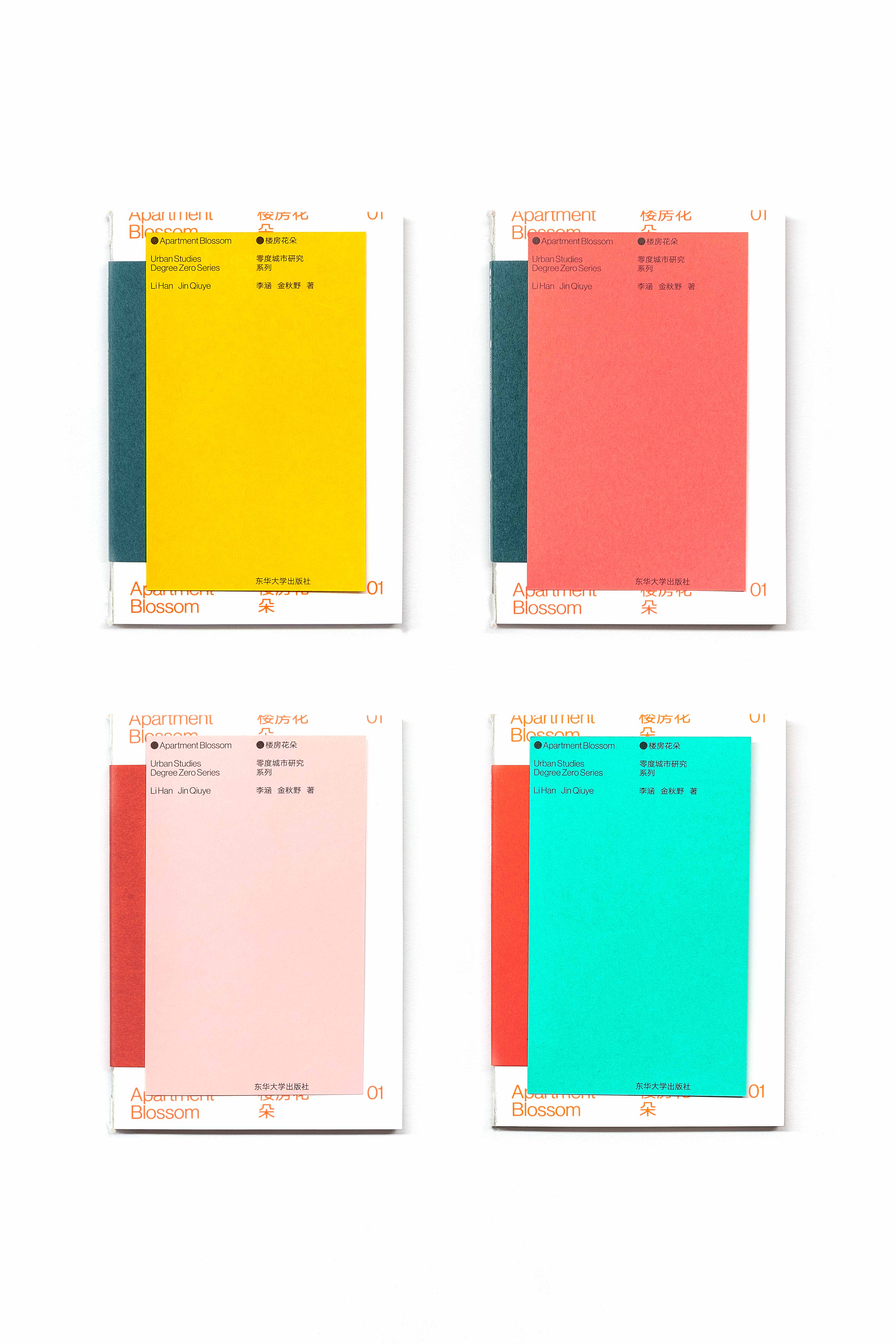20. janvier 2022
A spread from Apartment Blossom, Li Han and Jin Qiuye, Donghua University Press, 2021 (Photo: World-Architects)
Apartment Blossom is the second volume in the Urban Studies Degree Zero Series. This beautifully designed, delicately bound book includes short essays by Li Han, partner at Drawing Architecture Studio, and Jin Qiuye, professor at Beijing University, as well as photographs of maquettes inspired by the often ad-hoc balconies of apartment buildings in Beijing. These balconies provide the platform for the authors to explore what such spaces can mean in sociological and artistic senses.
Li Han calls the balconies “cliff cages” and his essay takes the reader on a meandering tour of them, which he describes as “falling from the balcony to the miniature world.” While his primary interest seems to be in what a maquette, or model, can represent on its own, as a living, organic object (“what we make is the model, not any simulation of another object”), his exploration of the miniature world leads the reader to think about other artists and artisans—both visual and literary. Li Han offers anecdotes about Picasso, Cezanne, and Kafka and discusses the Congolese artist Bodys Isek Kingelez’s “extreme maquettes.” None of Kingelez’s models ever made the jump to full-scale, yet they are displayed in museums throughout the US and Europe, existing both as tool and representation. And these extreme models are full of life, of joy. In this sense, Li Han’s depiction of models and maquettes as works of art in their own right reminds me of the artist Joseph Cornell’s wooden boxes — windows into an entire miniature universe.
A couple of hundred "researchers" under Li Han and Jin Qiuye produced two 1:20 models each: an existing balcony and an enclosure of their own design. (Photo: World-Architects)
The second essay in Apartment Blossom is Jin Qiuye’s “Balcony, A Stage of Life.” He too uses examples from film and literature to explore balconies and patios, the indoor/outdoor, public/private spaces so ubiquitous in urban centers throughout Asia, Europe, and the Americas. Balconies, he reminds us, “perform an enormous variety of semi-outdoor functions, serving as a playground, gym, greenhouse, vegetable patch, dog run, aquarium, laundry room, clothesline, and storage shed. All of the above functions that are usually integrated into the courtyards, must be adapted to this transitional space barely one meter wide. With such a variety of functions and purposes, balconies as a type grow rich in characteristics and vivid details.”
The researchers were tasked to build models from cardboard or PVC for the main structure and "any available material on the market" for other components. (Photo: World-Architects)
Both the essays and the photographs of the models of balconies function as figurative windows — or doors partially ajar. The book doesn’t provide a hard and fast thesis or a full in-depth study of these folk constructions, but it allows the reader to wonder about the lives lived in these in-between spaces. There is something alluring about the exploration, about the peering in, and something almost tender about the precarity of such structures. They have been built little by little, out of necessity, out of hope, unplanned — by people looking for a little bit of light, some outside air. They could easily be removed, could fall down, or disappear due to modernization or newer, safer housing schemes.
Photos of the individual balcony models are followed by documentation of the models displayed together, stacked like buildings facing streets. (Photo: World-Architects)
Reading this book in 2022, it is impossible not to think about the use of such spaces during the very beginning of the COVID-19 lockdowns in spring of 2020. In crowded, densely populated cities around the world, many people were confined to their homes. In Spain, where I live, we could leave home only to buy groceries or visit the pharmacy; children could not leave their homes for 63 days. So balconies and rooftops became windows to the world, stages, places to perform, an opportunity to see and be seen. Neighbors shared gossip and news. People performed impromptu concerts from their balconies or did aerobics in the morning. Jin Qiuye calls this spontaneous use of space “a real life landscape” as opposed to the fake life landscape of suburban manicured lawns in the US. He tells us:
Even interiors of the models are furnished, making them akin to dollhouses. (Photo: World-Architects)
Apartment Blossom is a playful book, full of joy and budding with possibility. It invites the reader to imagine entire lives through a glimpse: a moment, a model, a miniature, a flowering hope. It entices us to believe in models, in dollhouses, as a way to create whole new worlds.

Apartment Blossom
Li Han, Jin Qiuye
Designed by Guang Yu
13.1 x 18.5 cm
176 Pages
Paperback
ISBN 9787566918352
Donghua University Press
Purchase this book




